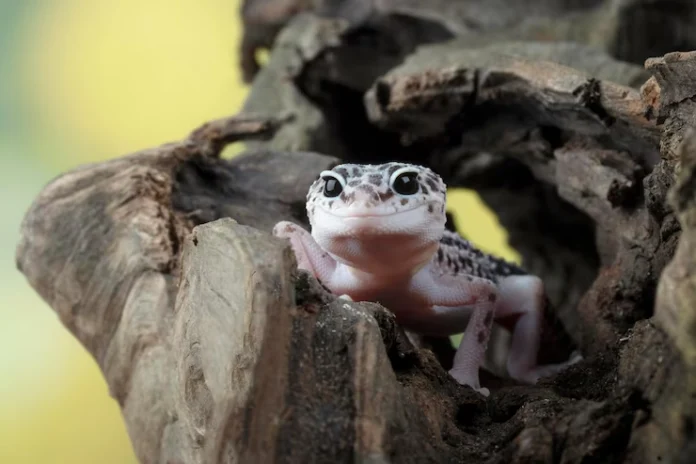Leopard Gecko: Nature’s Spotted Wonder
Leopard geckos (Eublepharis macularius) are a captivating species of reptiles beloved for their unique appearance, docile nature, and relatively easy care requirements. These nocturnal, ground-dwelling lizards boast a rich evolutionary history and offer fascinating insights into reptilian survival strategies. Whether you’re a herpetology enthusiast or a potential pet owner, understanding the leopard gecko is a rewarding journey into the world of desert-adapted reptiles.
Table of Contents
Scientific Classification
- Kingdom: Animalia
- Phylum: Chordata
- Class: Reptilia
- Order: Squamata
- Family: Eublepharidae
- Genus: Eublepharis
- Species: Eublepharis macularius
Description / Physical Description
Leopard geckos are medium-sized lizards with a distinctive, granular skin texture and vividly spotted patterns. Adults typically measure between 7 to 10 inches (18–25 cm) in length, with females usually smaller than males.
Their coloration is perhaps their most famous trait: pale yellow bodies peppered with dark brown or black spots, giving rise to the term leopard spotted gecko. Selective breeding has produced an array of stunning morphs, including the increasingly popular black and white leopard gecko, a visually striking variation that retains the species’ trademark spotted motif in monochrome.
Another noteworthy feature is the gecko’s thick, fleshy tail. Not only is it a fat storage organ, but it also plays a critical role in predator evasion through leopard gecko tail drop, a defense mechanism that allows the tail to detach and later regenerate.
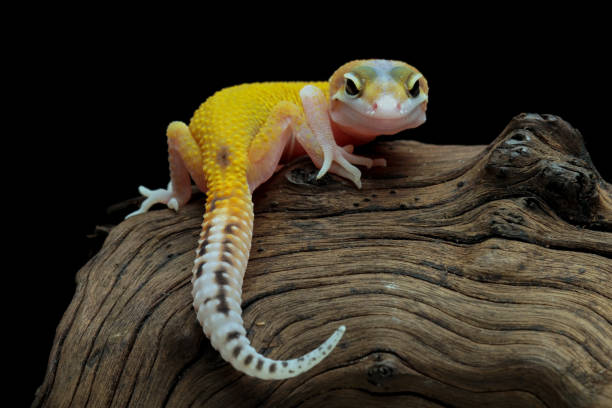
Range & Distribution
So, where do wild leopard geckos live? These reptiles are native to the arid and semi-arid regions of South Asia. Their natural distribution spans across:
- Afghanistan
- Pakistan
- India (northwestern regions)
- Iran
- Nepal
In these locations, they inhabit rocky grasslands and desert fringes, rarely venturing into densely vegetated zones or human settlements.
Habitat
Leopard geckos thrive in environments with low humidity and warm temperatures. Their ideal natural habitats are characterized by:
- Rocky crevices and outcroppings for shelter
- Sandy or clay soils for burrowing
- Sparse vegetation providing limited cover
They are crepuscular to nocturnal, avoiding the scorching heat of the day by remaining in cool burrows. This behavioral rhythm aligns with their thermoregulatory needs, underscoring the importance of heat in their biology. A common concern among pet owners is how long can a leopard gecko go without heat—while they can survive short periods of cooler temperatures (24–48 hours), long-term exposure can lead to lethargy, digestion issues, and even death.

Diet
Leopard gecko—what do they eat? In the wild, their diet consists primarily of live insects:
- Crickets
- Grasshoppers
- Beetles
- Moths
- Occasional spiders and caterpillars
Captive leopard geckos thrive on a similarly varied insectivorous diet. The best food for leopard geckos includes:
- Gut-loaded crickets
- Mealworms
- Dubia roaches
- Waxworms (as treats)
Calcium and vitamin D₃ supplementation is crucial to prevent metabolic bone disease, especially in indoor settings.
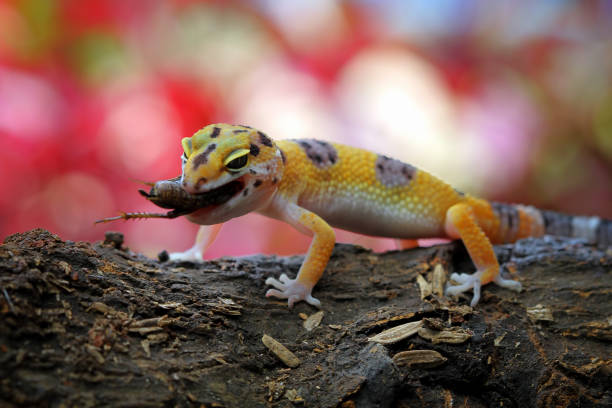
Behaviour / Lifestyle
Leopard geckos are solitary, ground-dwelling creatures. They are territorial and prefer to live alone, especially males. Their activity peaks during dawn and dusk, when they emerge to hunt and explore.
These geckos are not climbers like many of their relatives; instead, they exhibit terrestrial habits and rely on stealth and camouflage rather than speed. Their vocalizations, while rare, include squeaks or chirps—often as a sign of distress or during mating encounters.

Lifespan
With proper care, leopard gecko pets can live impressively long lives. While wild specimens may live around 6–10 years due to environmental pressures, captive geckos routinely surpass 15 years, with some individuals living beyond 20.
Key factors influencing longevity include:
- Stable temperature gradients
- Consistent feeding
- Regular veterinary check-ups
- A stress-free environment
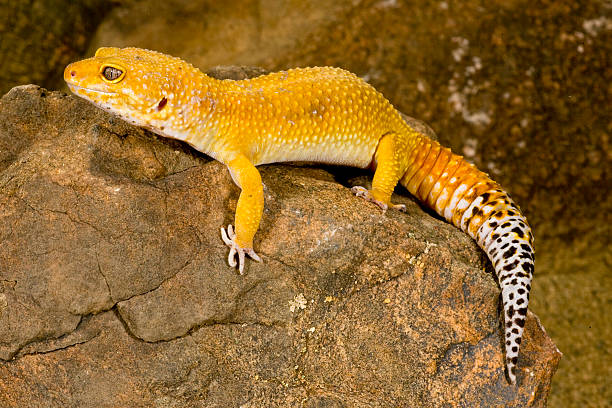
Adaptations
Leopard geckos have evolved a suite of adaptations tailored to their harsh, arid environments:
- Movable eyelids: Unlike many geckos, they can blink, protecting their eyes from dust and debris.
- Cryptic coloration: Their spotted pattern provides camouflage against rocky substrates.
- Tail autotomy: The leopard gecko tail drop serves as a life-saving distraction when threatened.
- Fat storage in tail: Acts as a reserve during food scarcity.
- Efficient moisture absorption: They extract water from prey and rarely need to drink standing water in the wild.
Mating & Reproduction / Reproduction & Lifecycle
Leopard geckos are oviparous, with breeding typically occurring in the spring and early summer. Males court females with tail vibrations and gentle nipping. Once receptive, the female will lay 1–2 eggs per clutch, often burying them in moist substrate.
Eggs incubate for 35–90 days, depending on temperature. Intriguingly, temperature-dependent sex determination plays a role—higher incubation temperatures favor females, while slightly lower ones yield males.
Juveniles hatch fully independent and begin hunting small prey within days. They reach sexual maturity around 8–12 months.
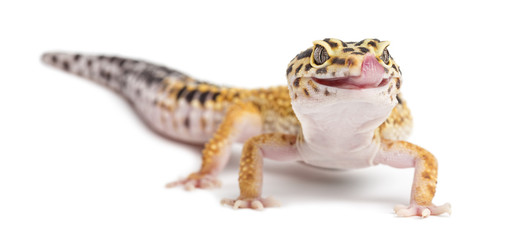
Predators
In the wild, leopard geckos face threats from:
- Snakes
- Birds of prey
- Small carnivorous mammals
- Larger reptiles
Their primary defenses include camouflage, fleeing to shelter, and, if needed, tail autotomy.
Conservation Status
Leopard geckos are currently listed as a species of Least Concern on the IUCN Red List. Their populations remain stable across most of their native range, although habitat degradation and collection for the pet trade pose localized threats.
Captive breeding has significantly reduced wild collection pressures, with many countries enforcing strict regulations to ensure sustainability.
Interesting Facts
- The leopard gecko origin dates back to the Eocene epoch, around 50 million years ago.
- Unlike most geckos, they do not have adhesive toe pads and cannot climb smooth vertical surfaces.
- Leopard geckos “lick” their eyes to clean them—a behavior stemming from their evolved ability to produce minimal tears.
- The black and white leopard gecko morph is often called the “Black Night” or “White Knight,” depending on genetic lineage.
- These geckos store excess nutrients in their tails, a feature vital for surviving lean periods.
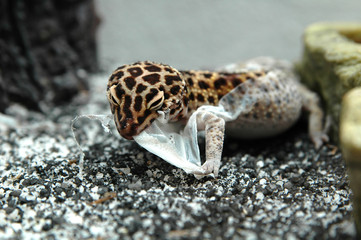
As Pets
Are leopard geckos good pets? Absolutely. They are among the most recommended reptiles for beginner herpetologists due to their:
- Docile temperament
- Ease of handling
- Low maintenance requirements
- Lack of need for UVB lighting (although it may be beneficial)
A comprehensive leopard gecko needs list for pet care includes:
- 20-gallon tank with secure lid
- Heat mat or ceramic heat emitter (no heat rocks)
- Hides (warm, cool, and humid)
- Thermostat and thermometer
- Calcium + vitamin D₃ supplement
- Paper towel or tile substrate (avoid sand)
- Daily water and feeding routine
Proper leopard geckos care ensures a thriving, interactive, and healthy companion.
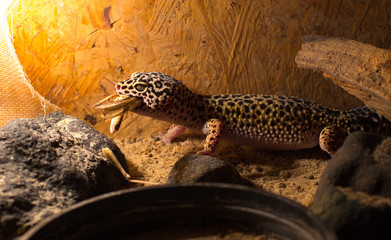
Classification of Species
The leopard gecko species, Eublepharis macularius, belongs to a genus that includes several close relatives. Other species within the genus Eublepharis include:
- Eublepharis turcmenicus (Turkmenistan Gecko)
- Eublepharis fuscus (West Indian Leopard Gecko)
- Eublepharis angramainyu (Iraqi Leopard Gecko)
- Eublepharis hardwickii (Hardwicke’s Gecko)
These species vary slightly in size, coloration, and habitat preferences but share core morphological traits.
Subspecies
Five recognized subspecies of the leopard gecko exist, primarily distinguished by geographic range and slight phenotypic differences:
- Eublepharis macularius macularius – The nominal subspecies; widely distributed and most common in captivity.
- Eublepharis macularius afghanicus – Found in Afghanistan; slightly smaller, with more pronounced patterning.
- Eublepharis macularius fasciolatus – Known for banded patterning, inhabits regions of Pakistan.
- Eublepharis macularius montanus – Mountain-dwelling form with thicker body and tail.
- Eublepharis macularius smithi – Rare, found in northwestern India; recognized by its unique coloration.
In conclusion, the leopard gecko stands as a testament to evolutionary adaptation, aesthetic diversity, and interspecies compatibility. Whether admired in the wild or cherished in terrariums, this reptile offers endless intrigue and is undoubtedly one of the most iconic geckos known to science.

